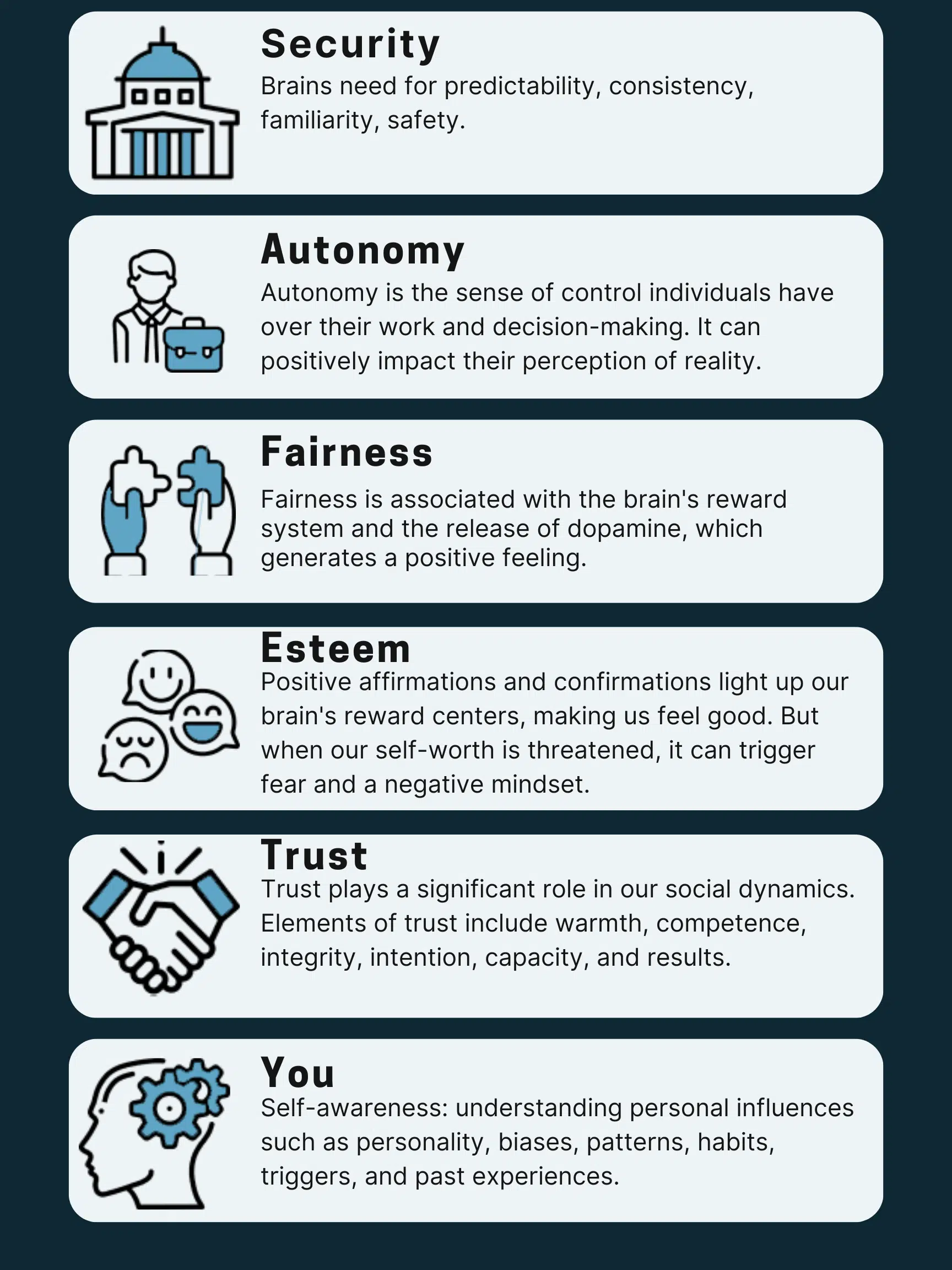SAFETY Framework And How To Manage Triggers With TRAIN
In the book, “Psychological Safety: The Key to Happy, High-Performing People and Teams,” Dr. Dan Radecki, Ph.D., Leonie Hull, Jennifer McCusker, and Christopher Ancona introduce a S.A.F.E.T.Y. model. This blog will delve into the practical and user-friendly aspects of the S.A.F.E.T.Y. model and how to manage triggers with the easy-to-remember acronym “TRAIN.”
What is the S.A.F.E.T.Y. Model?
What does it mean to you in your context?
The enclosed image depicts a practical and easy-to-remember approach to building psychological safety.
Dr. Dan Radecki, Ph.D., Leonie Hull, Jennifer McCusker, and Christopher Ancona also illustrate ways to manage triggers that inevitably are part of our workplace experiences. Before revealing TRAIN, take a moment to reflect on the following questions:
- What are the type of events, people, and situations, that often trigger negative emotions for you at work?
- What are the type of events, people, and situations, that often trigger positive emotions for others at work?
- How do you currently handle triggers?
We all get triggered by someone or some situation that generates an emotional reaction, positively or negatively. For instance, we may become triggered and angry when someone interrupts and dominates discussions. At times, we may behave reactively, irrationally, and ineffectively. Alternatively, we generate positive emotions surrounding feeling acknowledged and appreciated for our hard work and contributions. Emotional intelligence, mainly self-awareness, helps us be present versus disconnected to notice and name emotions and remain in emotional control by slowing down and pausing. Additionally, awareness of others helps us be empathic versus insensitive, stop, reflect, and actively listen for understanding.
Dr. Dan Radecki, Ph.D., Leonie Hull, Jennifer McCusker, and Christopher Ancona highlight the steps to manage TRIGGERS.
How to Manage Triggers with TRAIN
Triggers:
Acknowledge, trigger, observe, and describe emotion versus suppressing emotion that takes mental energy away, decreases cognitive process, and negatively impacts health.
How do you currently handle triggers?
Reflect:
Reflecting on SAFETY biases that may influence your perspective would be best. Thinking about your thinking, generating insights, and seeing different perspectives.
What strategies can you implement to promote more reflective thinking? Within your team?
Appraise:
You can challenge your appraisals or negative mindset and then consider an alternative, more optimistic outlook. Rewrite the story or take an alternative approach, perspective-take, and seek positive interpretations that may challenge your assumptions, beliefs, and attitudes.
What techniques or approaches have you found effective in rewriting the story or taking an alternative approach?
Include:
Build in-group connections by taking another’s perspective, establishing commonalities, and encouraging divergent views.
What steps can we take to understand better and appreciate each other’s perspectives and backgrounds?
Neutralize:
You should be able to neutralize your position and language and engage in open dialogue that acknowledges S.A.F.E.T.Y.’s conflict while respecting the psychological safety of everyone involved.
What strategies can you implement to neutralize language and create a more inclusive communication environment?
Conclusion:
In their book “Psychological Safety: The Key to Happy, High-Performing People, and Teams,” Dr. Dan Radecki, Ph.D., Leonie Hull, Jennifer McCusker, and Christopher Ancona present the S.A.F.E.T.Y.model, practical and user-friendly guide to cultivating psychological safety within teams. Plus, learning how to manage triggers with the easy-to-remember acronym “TRAIN. Using these frameworks, individuals, and organizations can foster an environment where individuals feel safe, empowered, and motivated to contribute their best, resulting in happier and high-performing teams.
Recommended Reading:
Radecki Ph.D., Dr. Dan; Hull, Leonie; McCusker, Jennifer; Ancona, Christopher.
Edmondson defined psychological safety as: “a belief that one will not be punished or humiliated for speaking up with ideas, questions, concerns or mistakes, and that the team is safe for interpersonal risk-taking.”
Harvard Business School professor Amy Edmondson
Meet Jodie, your Culture & Transformation Captain. With over twenty years helping people change, facilitating team discussions, building cultures, designing, implementing and teaching classes, your organization is in good hands.




